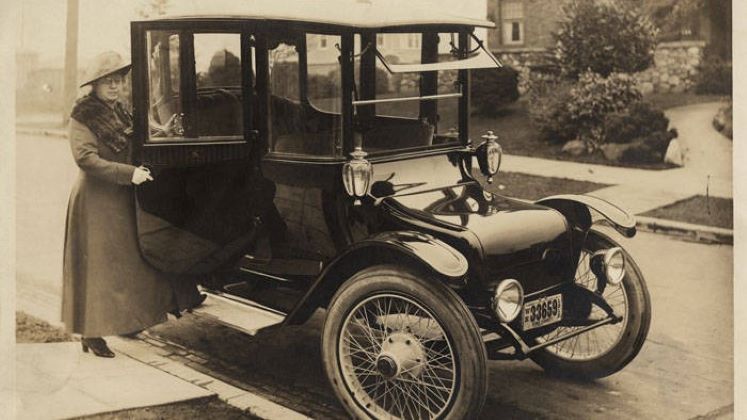Visiting research student Christian Vedel presents a fresh approach to measuring the economic impact of infrastructure change. By investigating the natural destruction and recreation of a canal in North-Western Denmark, Christian reveals the effects of infrastructure, avoiding common methodological challenges. A ‘perfect storm’ in 19th century Denmark recreated a canal, bringing people, trade, and further investment to an area which had lagged its better-connected neighbours for 700 years.
Infrastructure projects are some of the most extensive and expensive projects that our politicians can decide on. These projects need to be well-motivated: Is it sensible to build a new bridge, expand a harbour, build a new canal, or maintain an old one? Measuring the economic consequences of infrastructure investments is critical for answering these questions. But the involvement of politicians or any human decision-maker makes this challenging.
An underexploited solution to this problem is to measure the effects of natural changes to infrastructure that occur with no human decision making . North-Western Denmark offers two such cases. The opening of the Agger Canal in North–Western Denmark after a ‘perfect storm’ in 1825 was followed by a significant boost in trade, investment, and population growth caused by new infrastructure. In the 1100s a similar canal, in the same location silted up. After this, economic activity in the region fell dramatically.
Human involvement in decisions about where to invest creates challenges for researchers trying to understand economic consequences. Often, areas where economic performance is strong receive greater investment, though sometimes the reverse is the case (think ‘Levelling Up’). If a region sees growth once a canal – for instance – is constructed, it could be because the region was already thriving or because the canal reduced transport costs and boosted trade.
However, history offers several cases where a location’s natural infrastructure endowments have changed independently, and with important economic consequences. In the 15th century, a land bridge connecting India and Sri Lanka was torn apart by a storm; In the 12th century the so-called ‘Zwin inlet’, a natural canal, was formed in Flanders, which was responsible for a golden age of the city of Bruges.
The effects of a ‘perfect storm’ which hit North-western Denmark in 1825 provide an ideal test case for measuring the consequences of natural infrastructure change. On the night of February 3rd , a storm hit the Eastern North Sea, and in a remote corner of Denmark, the so-called Agger Isthmus was breached. At first, the ‘Agger Canal’ was not navigable, but via gradual erosion, it became large enough for ocean-going ships by 1834.
For settlements along the coast of the Western Limfjord, this vastly decreased the distance to the open ocean (see map). What followed was a period of remarkable growth. Suddenly there were international cargo ships travelling to and from the region. There were none before. Preliminary work indicates a 10% increase in population attributable to the canal. Similarly early industrialisation was boosted as measured by the construction of many new brickworks.

The historiographic evidence also suggests infrastructure caused more infrastructure. The overwhelming traffic in coastal towns caused further infrastructure investments: new harbours, an alternative canal, the first Danish steamship route, and eventually also railways were explicitly constructed because of the Agger Canal.
This was not the first time this region was endowed with such a convenient path to the open ocean. Though in the 19th century locals rejected it as a nonsensical myth, we know from geological and historical evidence, there was also a natural canal in approximately the same location until around the end of the 11th century.
The Skagerrak – the ocean between Norway and Denmark – was dangerous and hard to navigate for the ships of the time. The Limfjord offered a shortcut around this dangerous sea and thus became the main hub for Viking fleets to gather before sailing west to trade (and pillage).
The last historical evidence of its use was in 1086, when King Canute IV (‘the holy’) gathered his fleet in the Limfjord, ready to sail west and uphold his ‘claim’ to the English throne. Sometime after this, but before 1208, the natural canal closed because of rising land – a process that had been going on since the last ice age.
This led to a reorientation of prosperity in the region. Never again would a Viking fleet sail from Denmark to England. Before the closing of the western opening, the Western Limfjord produced as many archaeological sites containing coins as any other place in Denmark, but after this event, the region stagnated. On the other hand, the Eastern Limfjord region became dense with findings.

In the following years, Eastern Limfjord – particularly the town of Aalborg – became an important centre of the herring trade between Hanseatic Lübeck and the rest of the Baltic. Aalborg grew to become the second-largest Danish market town by the time of the earliest census of 1672, while the Western Limfjord towns lagged far behind. The deterioration of natural infrastructure and the lack of trade that followed caused this divergence.
Danish society was radically different in the 1100s and 1800s. Nevertheless, when the same event is repeated 700 years apart (the second time in reverse), a consistent effect is observed. This shows the general importance of infrastructure in enabling market integration and investment. When infrastructure and trade deteriorated so did the local society. When it remerged, prosperity also came back.
These changes in infrastructure occurred independently of decisions based on local economic conditions. So, their consequences can be interpreted cleanly, as the result of improved infrastructure alone. The natural destruction and recreation of the Agger Canal is one of many historical examples that can be studied in this way. It reveals how powerful this approach can be.



